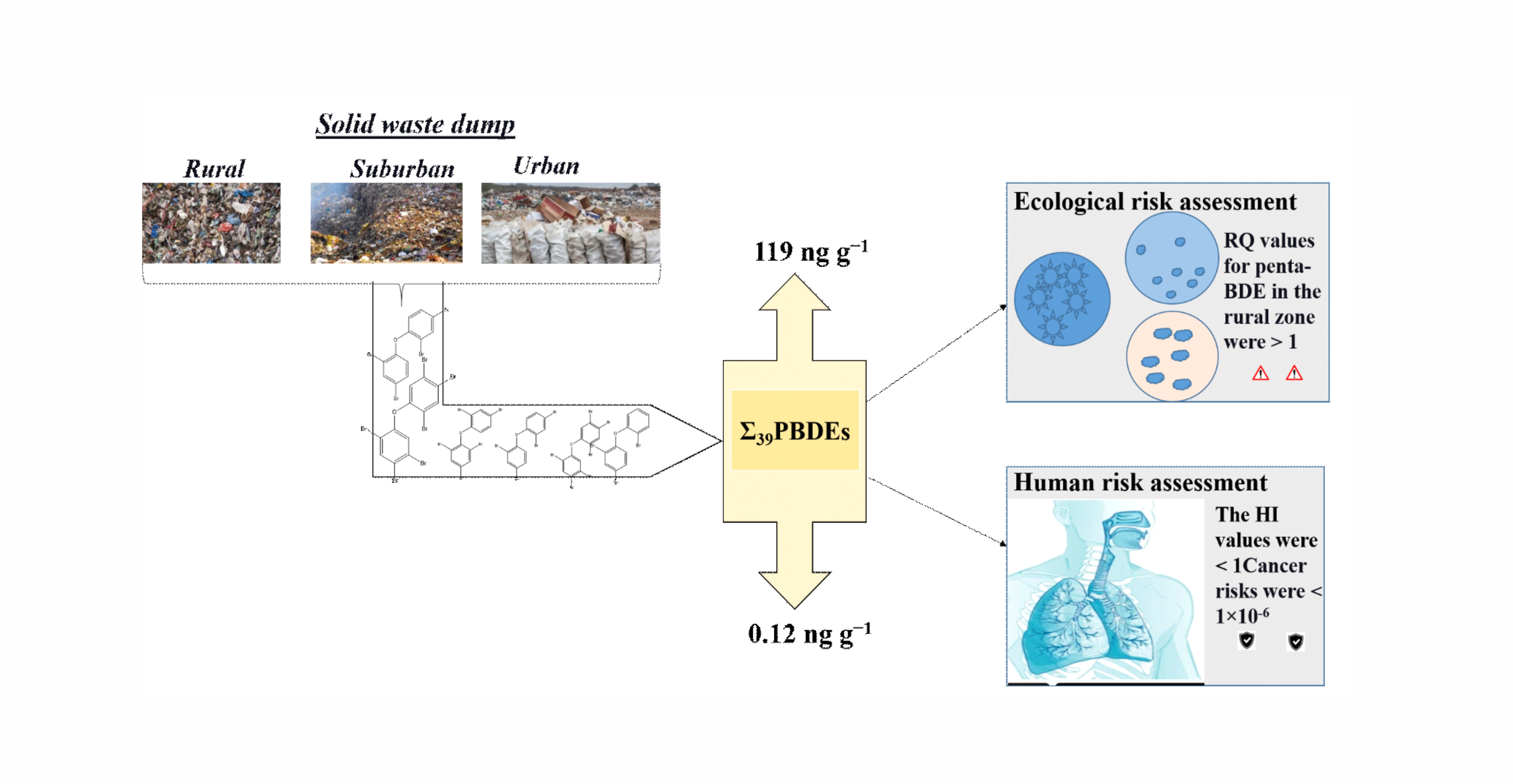
The Coordinated management of solid waste dumps from different anthropogenic environments is important for pollution management of immediate and adjacent ecosystems. This study took three soil profile samples from three functional zones: the rural, the suburban, and the urban solid waste dumps. The samples were analyzed for the concentration, origin, and associated risks of thirty-nine Polybrominated diphenyl ethers (Ʃ39PBDEs). Σ39PBDEs demonstrated high concentrations and ranged from 0.12 to 119 ng g−1 dw, in the order of rural > suburban > urban, and topsoil > subsoil > bottom soil. BDE-10, -11, -13, -15, -17, -99 and -119 showed relative abundance. Penta-BDE was moderately above standard and screening levels and demonstrated high and medium ecological risk in the rural and semi-urban zones. The non-carcinogenic and cancer risks highlight onsite exposure risks. PCA evaluation depicts an abundance of persistent and toxic flame retardant additives, and cluster analysis showed PBDEs were from a common source—cancer and hazard index exposure risk depicted rural > suburban > urban zone. The results suggested the continual use of banned flame retardant additives in commercial formulations. A comparison of PBDE implied that PBDEs in the suburban and urban zones could have undergone environmental processes, and the rural zone received fresh deposition. Migration and exposure to the detected -BDEs may increase the risk to humans in these zones. The results highlighted the need to establish a standard management protocol and monitor legacy pollutants in environmental and biological samples around solid waste dump sites and similar catchments.
Total file downloads: 10